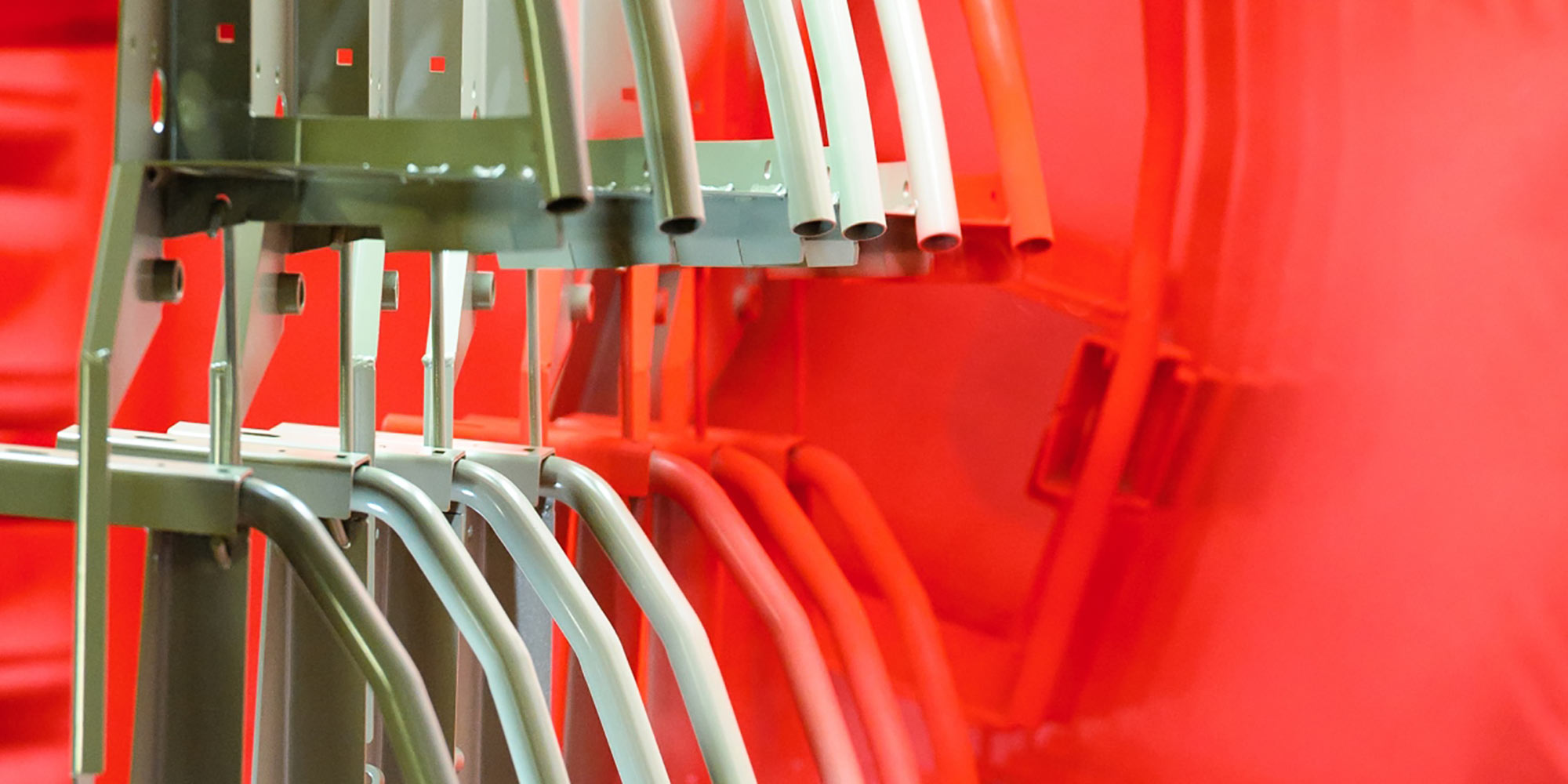The latest production processes for top quality
Around 14,000 different components have been coated so far - from tiny washers to massive crane booms.
Our coating lines employ two kinds of process:
A) Cataphoretic dip priming and powder coatingThis process involves the following steps: |
|
| 1. Surface preparation (blasting) |
In this process the surface is cleaned and the edges rounded off. Depending on the sensitivity of the plate - from a thickness of 2 mm. The blasting process is fully-automatic - a surface quality of up to SA 2 1/2 can be achieved as per ISO standard 8501-1. |
| 2. Pretreatment |
The automatic handling system conveys the units through the baths. Pre-treatment involves a 9-zone dip process with zinc phosphating. All baths are operated with demineralised water. |
| 3. Priming | This involves a 3-zone CDP (Cataphoretic Dip Priming) process using water-based paint, as used throughout the automotive industry. The advantage of this type of priming system is its excellent corrosion protection and uniform thickness of each coat right into every cavity. |
| 4. Baking | Optimum adhesion of the primer to the workpiece is ensured by baking at 160°C. Baking takes up to 35 minutes, depending on the wall thickness of the workpiece. |
| 5. Top coat | The top coat is applied using powder coating. The prefered powder materials are those that are tough enough for outdoor applications. Facade quality is also available if that is more appropriate. There are two production lines available.
|
| 6. Baking | The powder coating finish needs to be baked at between 180°C and 200°C to achieve the best possible quality. Heating takes 55 minutes to allow for the wide range of components, some with material thicknesses in excess of 60 mm. |
B) Powder coating with primer plus top coatThis process involves the following steps: |
|
|
1. Surface preparation |
In this process the surface is cleaned and the edges rounded off. Depending on the sensitivity of the plate - from a thickness of 2 mm. The blasting process is fully-automatic - a surface quality of up to SA 2 1/2 can be achieved as per ISO standard 8501-1. |
| 2. Priming | The primer powder is applied in a second step. |
| 3. Baking | The primer powder is baked. |
| 4. Powder coating | The top coat is applied using powder coating. The preferred powder materials are those that are tough enough for outdoor applications. Facade quality is also available if that is more appropriate. One production line is dedicated to this process. |
| 5. Baking | Here, the components obtain their final gloss finish. The baking oven is an open-burner gas-fired furnace. The powder coating finish needs to be baked at between 180°C and 200°C to achieve the best possible quality. Heating takes 55 – 70 minutes to allow for the wide range of components, some with material thicknesses in excess of 70 mm. The pores in the powder need to stay open as long as possible to enable degassing. The result is a tough, elastic and impact-resistance surface finish. |

